Excerpts from Jim Conrad's
Naturalist Newsletter

from the the September 16, 2012 Newsletter issued from the valley of the Dry Frio River in northern Uvalde County, southwestern Texas, on the southern border of the Edwards Plateau; elevation ~1750m (~5750 ft); N29.62°, W99.86°; USA
MOONSEED
On the deer fence surrounding the five raised beds where all the mustard greens, turnip tops, bok choy, tatsoi and other greens I can eat are flourishing, there's a twining vine whose drooping clusters of pea-sized fruits are turning very prettily red, as shown above.
This is one plant NOT endemic to our little corner of Texas, but rather I know it well from back East. Just for the pleasure of seeing something special and familiar I squashed a fleshy red fruit between my fingers and looked at the seed, which you can see yourself below:
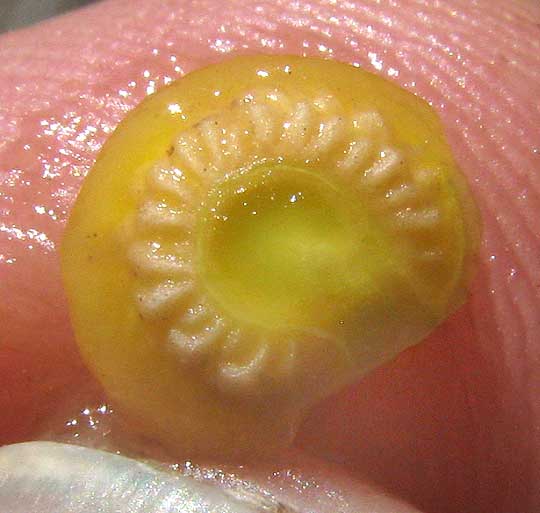
It's just like a snail's shell, right? Some people think it looks like the Moon, so the vine is called Moonseed, or more precisely Carolina Moonseed, as well as Carolina Coralbead, Redberry Moonseed, Carolina Snailseed, Coral Vine, and other such names. It's COCCULUS CAROLINUS*, native to the US Southeast and just beyond. It's a vigorous, adaptable species able to grow at woods edges, along streams, and even fencerows and other waste places.
Moonseed flowers are unisexual and occur on different plants, so obviously with its fruits our deer-fence vine is female. Moonseeds are members of the Moonseed Family, the Menispermaceae. All parts of the plant are reputed to be poisonous to humans, though birds eat plenty of the succulent-fleshed fruits, spreading the plant far and wide.
Certain indigenous American tribes used Moonseed medicinally for blood ailments, probably following the "Doctrine of Signatures," a primitive notion occurring worldwide based on the assumption that plants "signify" to us the use they are to serve us. Since the Moonseed's most conspicuous field mark is its blood-red fruits, it must be "signifying" that we can use it for blood ailments. Of course the things of Nature are the way they are for reasons other than their utility to humans. Nature simply doesn't work the way the Doctrine of Signatures assumes.
from the August 25, 2013 Newsletter issued from the Frio Canyon Nature Education Center in the valley of the Dry Frio River in northern Uvalde County, southwestern Texas, on the southern border of the Edwards Plateau; elevation ~1750m (~5750 ft); N29.62°, W99.86°; USA
MOONSEED FLOWERING
Sometimes a plant you think you know turns up in an unexpected place or somehow looking different than you expect, and you don't recognize it. That's happened to me several times with the vine shown below:
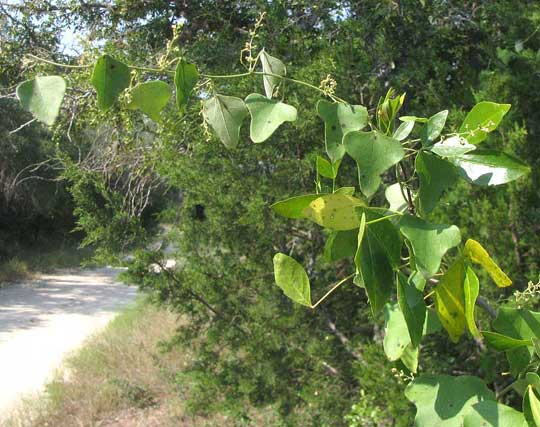
With those glossy, leathery-looking leaves you might think it's an escaped ivy, genus Hedera, or a kind of greenbriar, genus Smilax, but those plants produce their flowers in umbels, which means that the stems, or pedicels, of several flowers arise atop a larger stem, the peduncle, like an umbrella's stays radiating from the handle. Flowers on this plant are arranged in slender panicles, as you can see below:
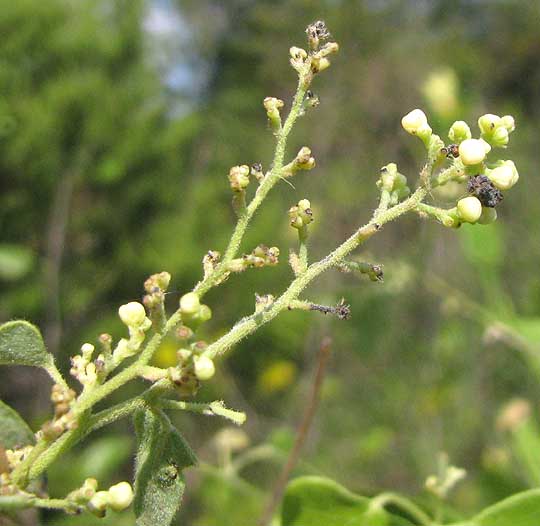
Flowers in that picture are unopened, falling off, and in general not in a good shape. One half-open blossom showing six stamens clustered within a three-parted floral envelope is shown below:
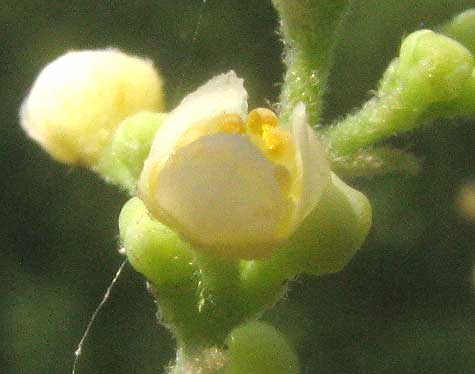
Also unlike ivy and greenbriar, leaves and stems of this vine are softly hairy, as seen on a leaf's undersurface shown below:
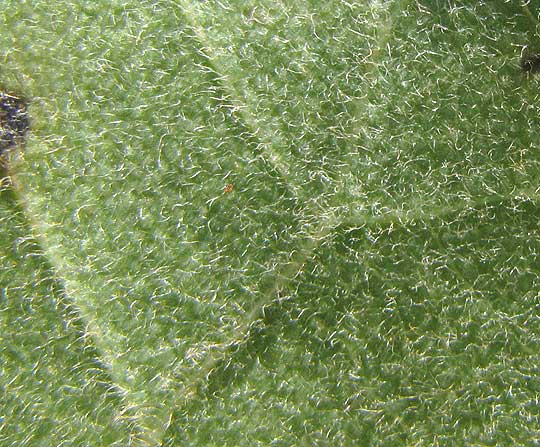
So, it looks like our plant bore unisexual male flowers which fell off as soon as their pollen was shed. The vine is woody with no tendrils but with hairy stems and leaves, and the leaves arise one per stem node, or "alternate."
This is an unusual combination of field marks, and they lead to the Carolina Moonseed, COCCULUS CAROLINUS, a member of the small Moonseed Family, the Menispermaceae..